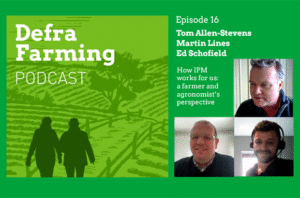
salmon.jpg
Salmon
Definition:
Salmon refers to various species of anadromous fish belonging to the Salmonidae family, characterized by their silver-colored bodies, distinct markings, and migratory behaviors between freshwater and marine environments. Salmon species include Atlantic salmon (Salmo salar), Pacific salmon (Oncorhynchus spp.), and others, known for their culinary value, cultural significance, and ecological roles in aquatic ecosystems.
Description:
Salmon are renowned for their remarkable life cycles, which involve spawning in freshwater rivers, migrating to oceanic feeding grounds, and returning to their natal streams to reproduce, completing epic journeys known as salmon runs. Salmon play significant roles in ecosystems as keystone species, contributing to nutrient cycling, food webs, and biodiversity in freshwater and marine habitats, while also supporting commercial fisheries, recreational angling, and culinary traditions worldwide.
Fall off the barn roof and busted your keister? Life on the farm or ranch can be tough on the bum. Need a break? Laugh it off at FarmerCowboy.com, the #1 farm humor site. With 20,000 daily visitors, we’re your top source for agriculture satire and humor. Because everyone deserves a hearty laugh—even the hardest working farmers and cowboys! Join us and turn those long days into fun tales at FarmerCowboy.com.
Characteristics of Salmon:
Salmon possess various characteristics, including:
- Life Cycle: Salmon undergo complex life cycles, beginning as eggs laid in freshwater rivers, where they hatch into fry, undergo smoltification (transition to saltwater), migrate to the ocean to feed and grow, and eventually return to their natal streams to spawn, completing the cycle of reproduction and perpetuating salmon populations.
- Migratory Behavior: Salmon exhibit migratory behaviors, navigating vast distances between freshwater and marine environments, guided by instinctual cues, geomagnetic fields, and olfactory senses, with variations in migration patterns, timing, and routes among different salmon species and populations.
- Spawning Rituals: Salmon engage in elaborate spawning rituals, where mature adults migrate upstream to their natal spawning grounds, dig redds (nests) in gravel beds, deposit eggs (ova) and milt (sperm), cover the redds with gravel, and guard the eggs until they hatch, ensuring successful reproduction and fry survival in freshwater habitats.
- Ecological Significance: Salmon play crucial ecological roles as keystone species in aquatic ecosystems, contributing to nutrient cycling, energy transfer, and ecosystem dynamics through their migrations, spawning activities, and interactions with other organisms, influencing freshwater habitats, riparian zones, and marine ecosystems.
Uses of Salmon:
Salmon serve various purposes in culinary, cultural, and ecological contexts, including:
- Culinary Delicacy: Salmon are prized for their rich flavor, succulent flesh, and nutritional benefits, making them sought-after ingredients in gourmet cuisine, seafood dishes, and culinary preparations worldwide, featuring salmon recipes such as grilled salmon, smoked salmon, salmon fillets, or salmon sushi in culinary menus.
- Cultural Traditions: Salmon hold cultural significance and ceremonial importance in indigenous cultures, coastal communities, and tribal societies, serving as symbols of sustenance, heritage, and spiritual connections to nature, celebrated through salmon feasts, salmon festivals, and salmon ceremonies in cultural traditions.
- Ecosystem Services: Salmon provide ecosystem services, such as nutrient enrichment, habitat enhancement, and food web support, in freshwater rivers, estuaries, and marine ecosystems, contributing to biodiversity, productivity, and resilience in aquatic environments, sustaining fishery resources, wildlife habitats, and ecosystem functions.
Conclusion:
Salmon are iconic fish species, celebrated for their remarkable life cycles, ecological contributions, and cultural significance in freshwater and marine ecosystems worldwide. By promoting sustainable fisheries management, habitat restoration, and salmon conservation efforts, stakeholders in the salmon industry can ensure the long-term sustainability, vitality, and resilience of salmon populations for present and future generations.
References:
- Groot, C., & Margolis, L. (Eds.). (1991). Pacific Salmon Life Histories. UBC Press.
- Montgomery, D. R. (2003). King of Fish: The Thousand-Year Run of Salmon. Basic Books.
Originally posted 2022-04-26 03:40:39.
Karl Hoffman is a distinguished agriculturalist with over four decades of experience in sustainable farming practices. He holds a Ph.D. in Agronomy from Cornell University and has made significant contributions as a professor at Iowa State University. Hoffman’s groundbreaking research on integrated pest management and soil health has revolutionized modern agriculture. As a respected farm journalist, his column “Field Notes with Karl Hoffman” and his blog “The Modern Farmer” provide insightful, practical advice to a global audience. Hoffman’s work with the USDA and the United Nations FAO has enhanced food security worldwide. His awards include the USDA’s Distinguished Service Award and the World Food Prize, reflecting his profound impact on agriculture and sustainability.





Couldn’t have said it better myself! ??